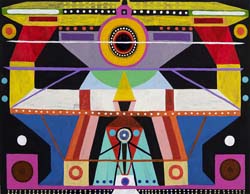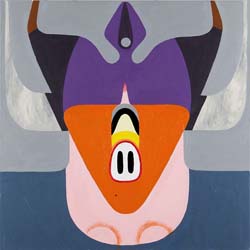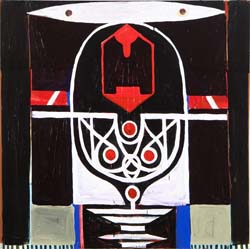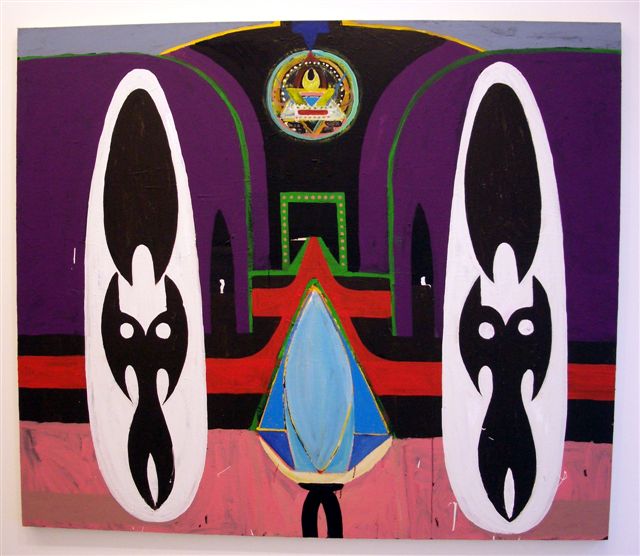
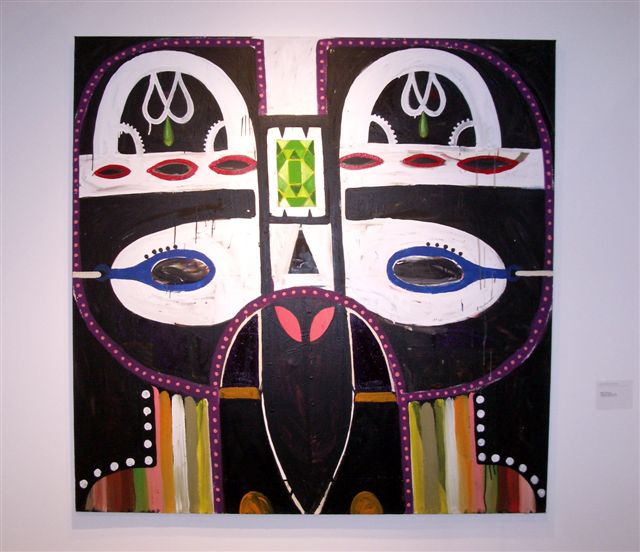
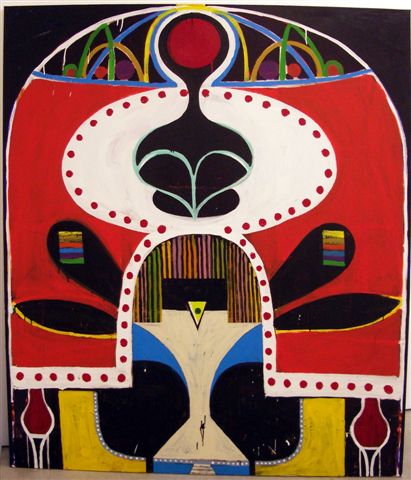
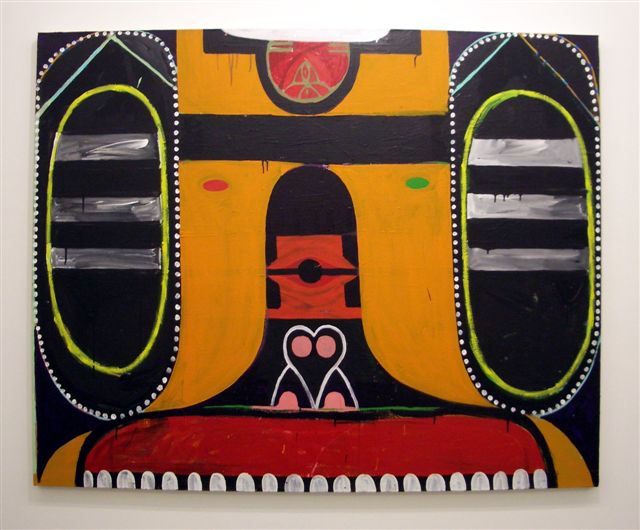
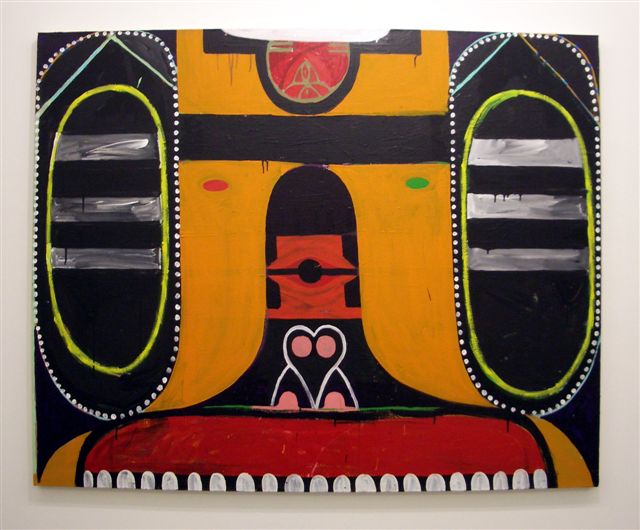
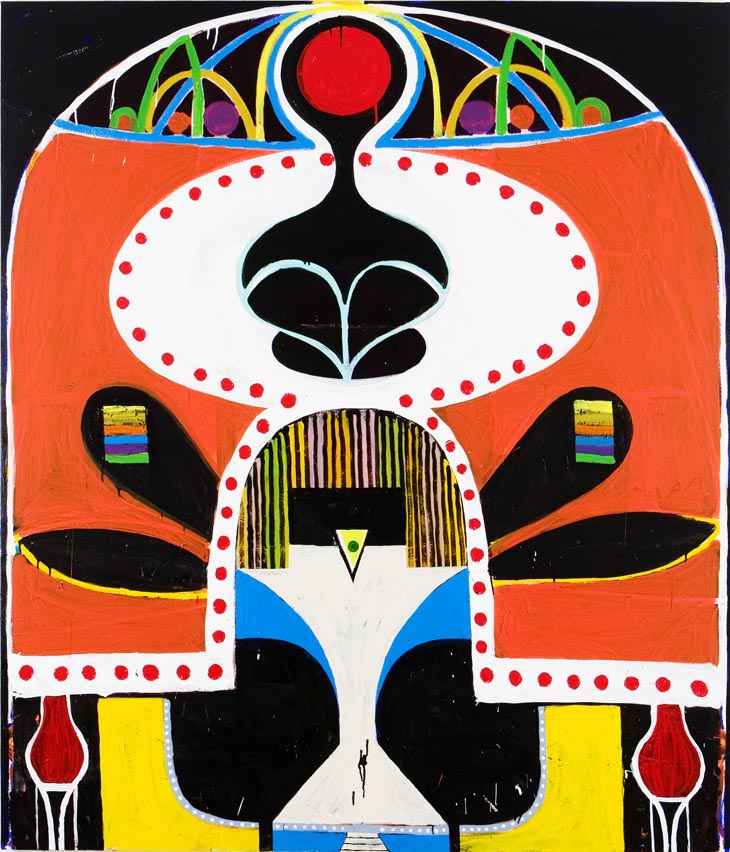
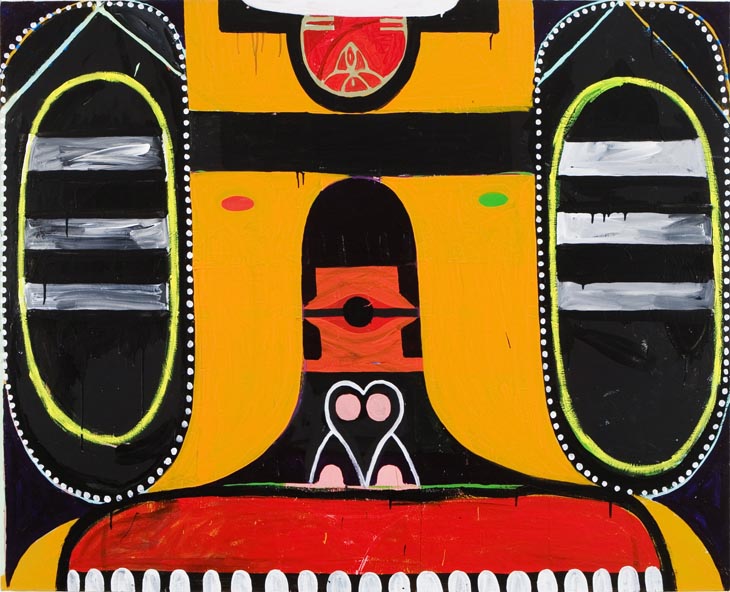

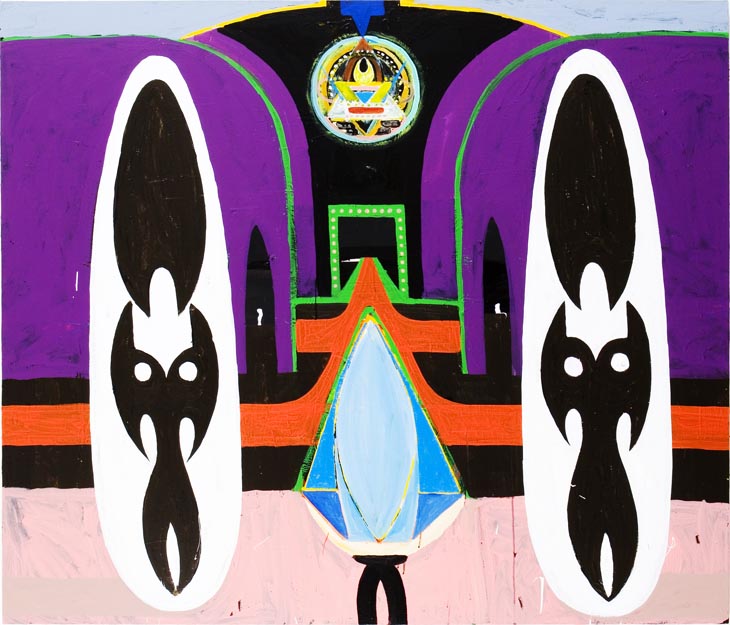
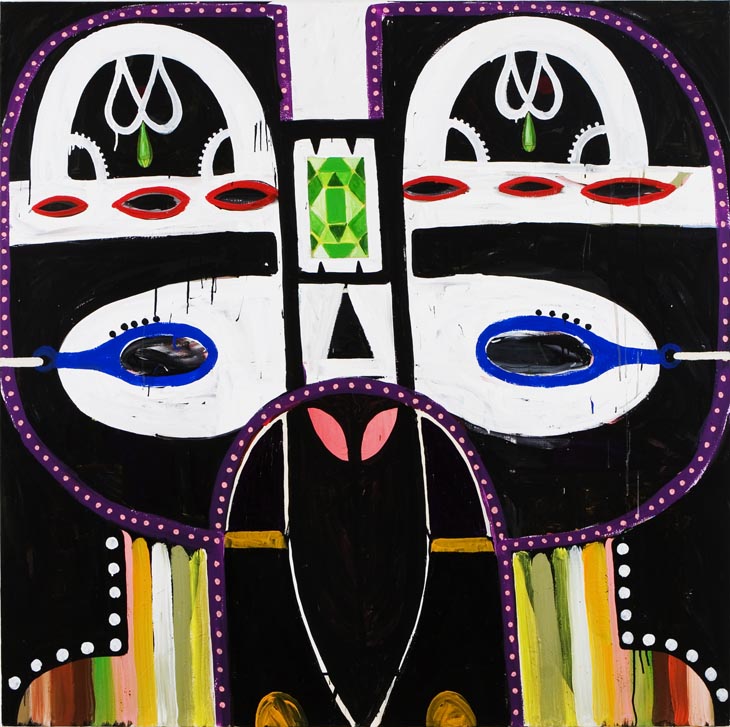
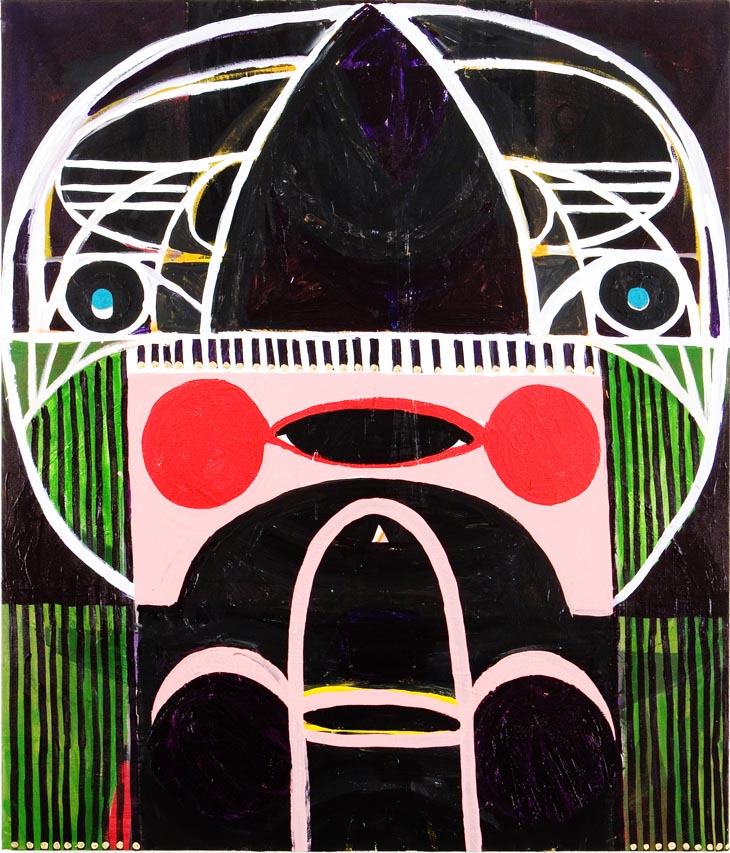


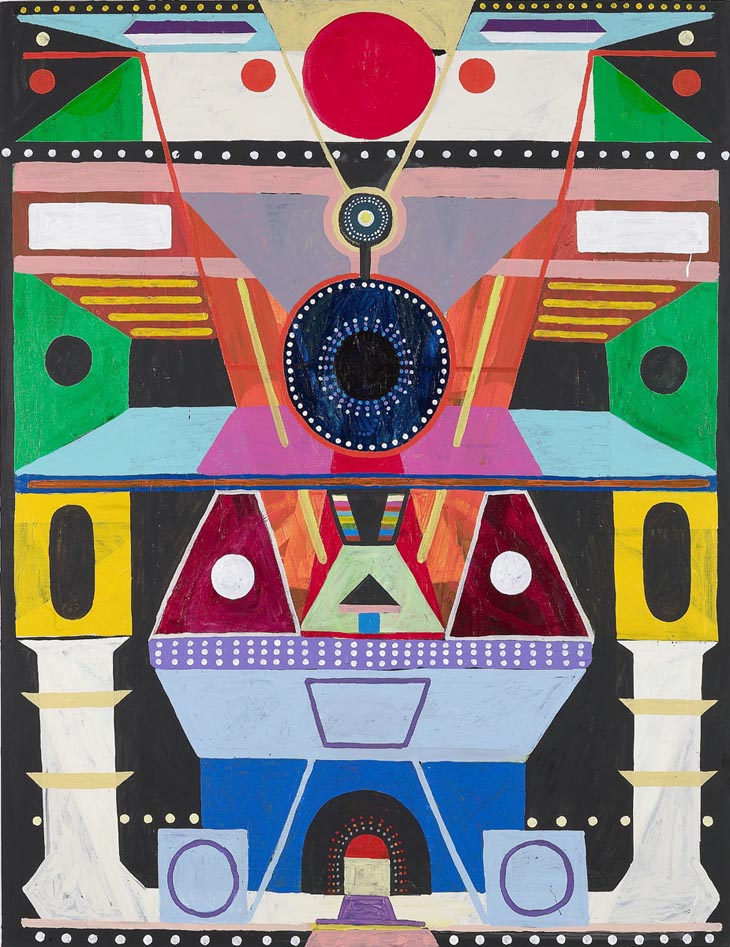

Baker Overstreet
Using abstraction as a means to negotiate between this internalized and externalised perception, Overstreet’s paintings evolve as contemplative planes of contradiction. Thick gooey swatches of impasto are juxtaposed with wandering drips, hurried markmaking, and defined geometric forms. Areas of patchy tincture battle to dominate their visible under-painting, while tonal perspective is skewed, as each individual shape tries to extrapolate itself from the flatness of the picture plane. Overstreet’s paintings evolve as instinctive and raw sentiments; eliciting a faux-naïve charisma his paintings bridge the gulf between primordial ritual and modern excess.
Influenced by tribal and folk art, Baker Overstreet envisions a primitive abstraction reflective of contemporary zeitgeist. In totemic compositions of bold colour and stylised patterning Overstreet develops his own painterly lexicon comprised of personal symbolism and gesture. Through their atavistic formalism, Overstreet’s symmetrical arrangements create deceptive pictorial fields: Rough scrawled lines and blocks of vibrant hue evoke fleeting suggestions
of figurative or architectural form, creating moments of recognition only to be devoured by the urgency of the paintings’ surfaces.
Using painting as a platform for wild invention, Overstreet’s Alibaster Plaster Caster dazzles with its Technicolor efficiency. Evoking a sort of psychedelic machine, acid hued geometric
shapes assert their form and function, each a vital component in the tightly balanced arrangement. As chunky blocks of primary tones anchor the scene, zippy stripes and motley dots refute gravity, giving Overstreet’s cumbrous futurism a sense of neon weightlessness.
Overstreet’s Faberge Luvas broaches glamour and mystery with crudely rendered gusto. Roughly approximating a grand hall interior with thick textured brushwork in purple and orange,
Overstreet’s canvas operates as a stage set for narrative and painterly action. Setting two African shield-like forms against a garishly painted background, a band of dirty pink secures the
surface’s flatness while the central diamond shape forces an awkward perspective. Looming over the scene, a Masonic emblem infuses all with secretive mystical authority.
Overstreet’s casual painting style belies an astounding authority and confidence. His solidly balanced compositions and fluid showoff gestures create precarious illusions where imagination and form meet. In Flattering Turtleneck a stylised portrait dissembles into contrasting associations to billboard signage, aboriginal hieroglyphs, and decorative patterning, flaunting Overstreet’s expansive lexicon of painterly vernacular.
Conveying undertones of Art Brut, outsider art, and graffiti, Overstreet’s large scale canvases offer contemporary ‘folk’ painting as something equally primitive and commercial. In Hot Mic, his deistic figure stands with the frivolous authority of a logo, a self-styled brand of carnivalesque dumbness. Rendered in bigtop red, white, and green, the trippy patterning blares mesmerizingly against a ground of layered and shifting blacks, giving the painting’s benign motif a sinister dimension.
Overstreet’s The Continental Bathosphere maps out a crazy architecture. Rendered with all the gaudiness of a casino, his composition’s impossible physics are precariously founded over a
heavily built up surface. As planes of colour approximate flatness over the remnants of drafts beneath, their raffish tones compete for spatial dominance by reverberating in and out of depth,
furthering the disorientating effect of Overstreet’s topsy-turvy perspective.







